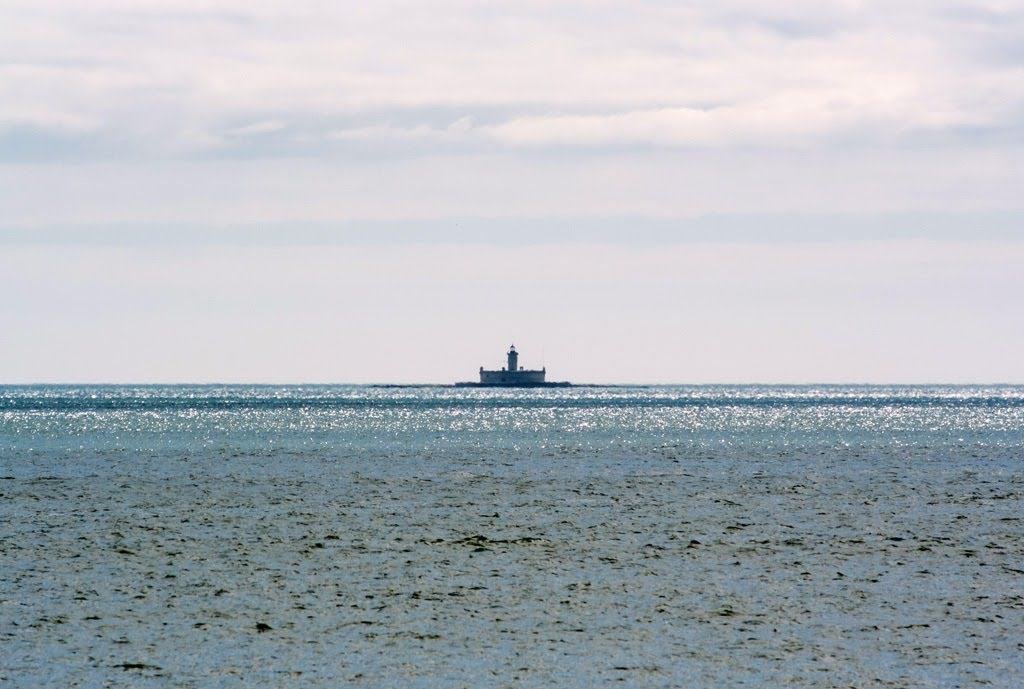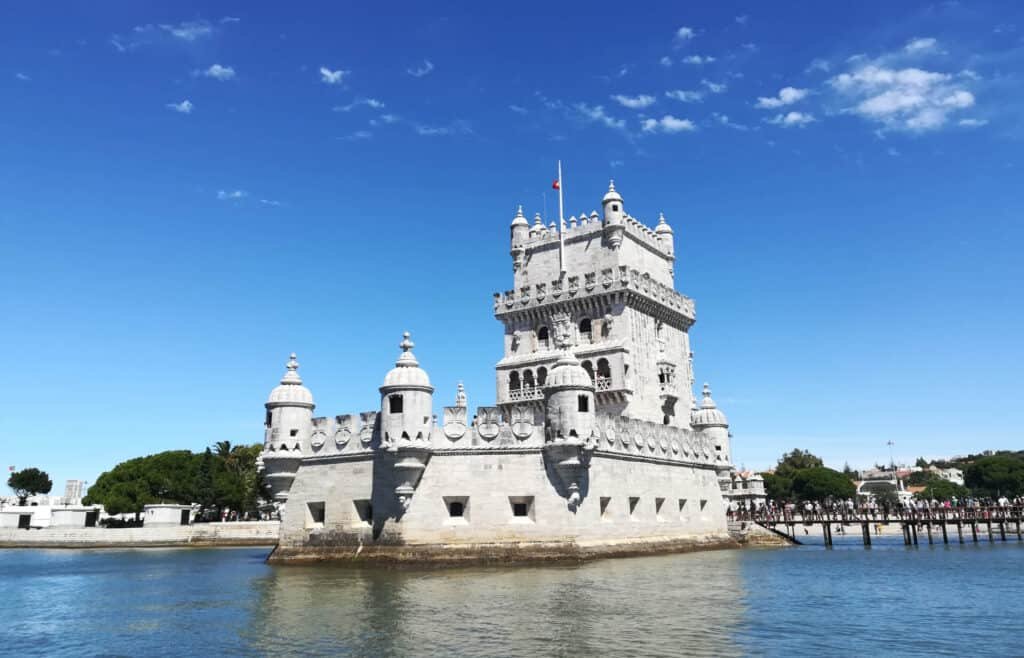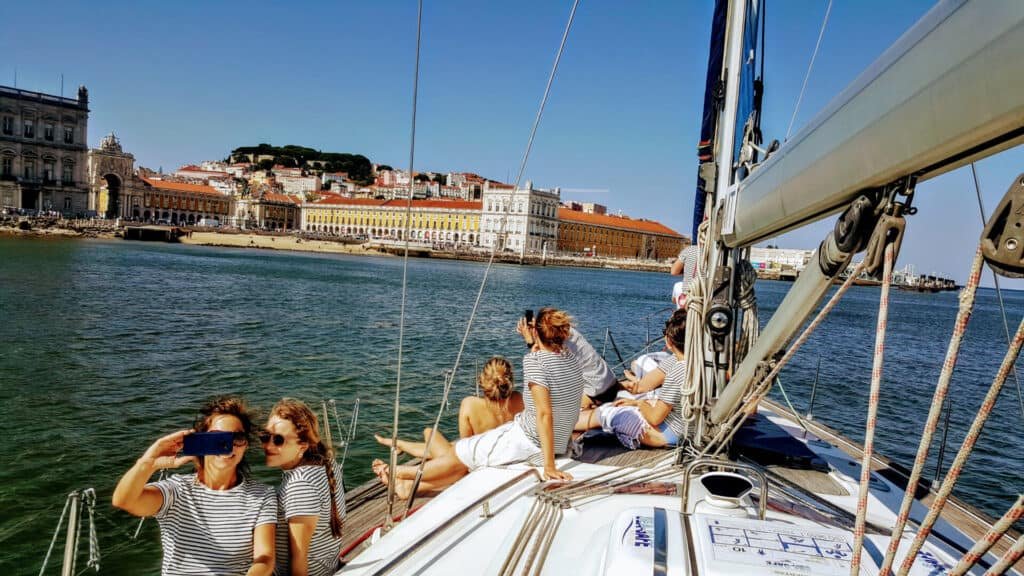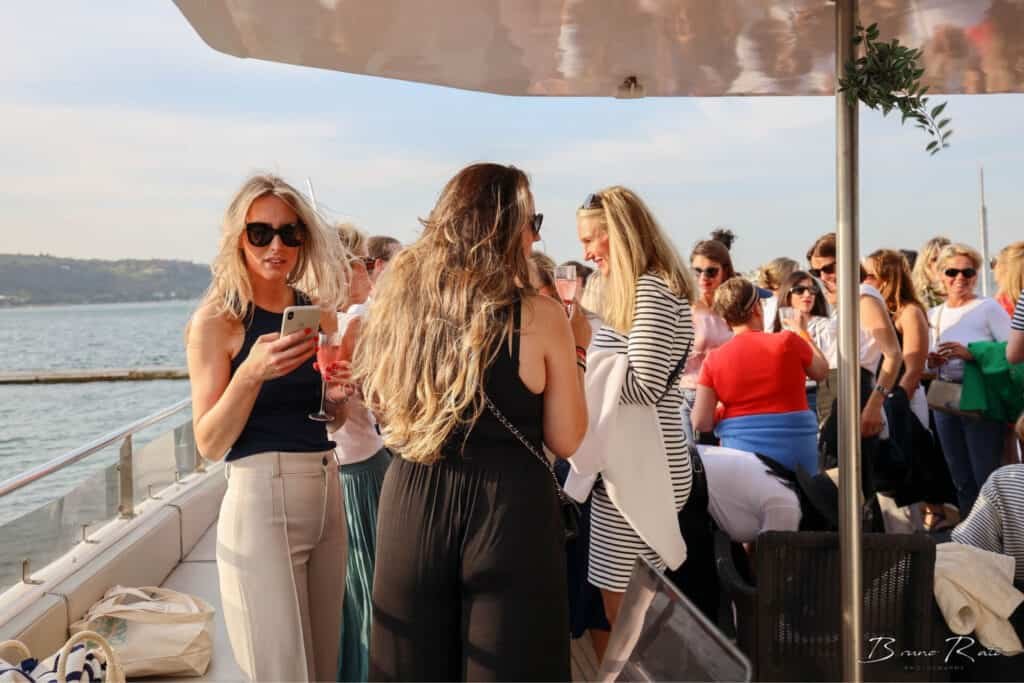Index
Bugio Lighthouse is a historical and cultural monument located in Lisbon. This lighthouse has a long history and is known for its distinctive architecture and privileged location in the middle of the waters at the mouth of the Tagus River.
The place where it stands is a sandbank formed by the silting up of the river mouth, the result of the confluence of its waters with those of the Atlantic Ocean, to the rhythm of the tides.
The toponymy howler can be attributed, among other versions, to the French bougie (candle), due to the similarity of its circular structure and the primitive tower topped by a lighthouse, with a lighted candle on its candlestick.
The structure of the fortification is made up of:
- The outer wall (with a circular base, 62 meters in diameter and 6 meters high) is divided by an arched doorway;
- Inner wall (circular in shape, 33 meters in diameter and 7 meters high);
- The central tower (circular in shape, 3 meters in diameter and 16 meters high) has an arched doorway. At the top of the tower is the modern lighthouse;
- Command house, barracks, armory, storerooms, cistern and chapel.
How it all began
The idea of a fortification for the bar of the River Tagus, to protect maritime access to the city of Lisbon, was first put forward during the reign of King Sebastião (1568-78) by the architect Francisco de Holanda. The sovereign accepted this suggestion and in 1578 commissioned Manuel de Almada to build this structure, with the strategic function of crossing fires with the Fort of S. Julião da Barra (at the time known as the Tower of S. Gião), also part of the city’s defensive scheme.
And it evolved
With the succession crisis that occurred after the death of the king in the battle of Alcácer-Quibir, and with the possibility of an invasion of Portugal by the troops of D. Filipe II of Spain, it was decided to build a small structure, raised on wooden stilts that, filled with stones, served as the foundation for a platform with artillery pieces.
Now under Spanish rule
In 1580, after surrendering to the Spanish armada, it was later dismantled. The fragility of the materials used, together with the instability of the sandbank and the action of the currents and tides, soon compromised this structure irreparably. In 1586, during the Philippine Dynasty, King Philip I commissioned a study to improve the defensive system of the Lisbon bar, which was under threat from English and Dutch privateers. Four years later, two designs for the fortification were presented to the sovereign, and Philip I opted for the scheme with a circular shape. In other words, it was a more solid fortification in the face of the dynamics of the waters and allowed for better positioning of the artillery.
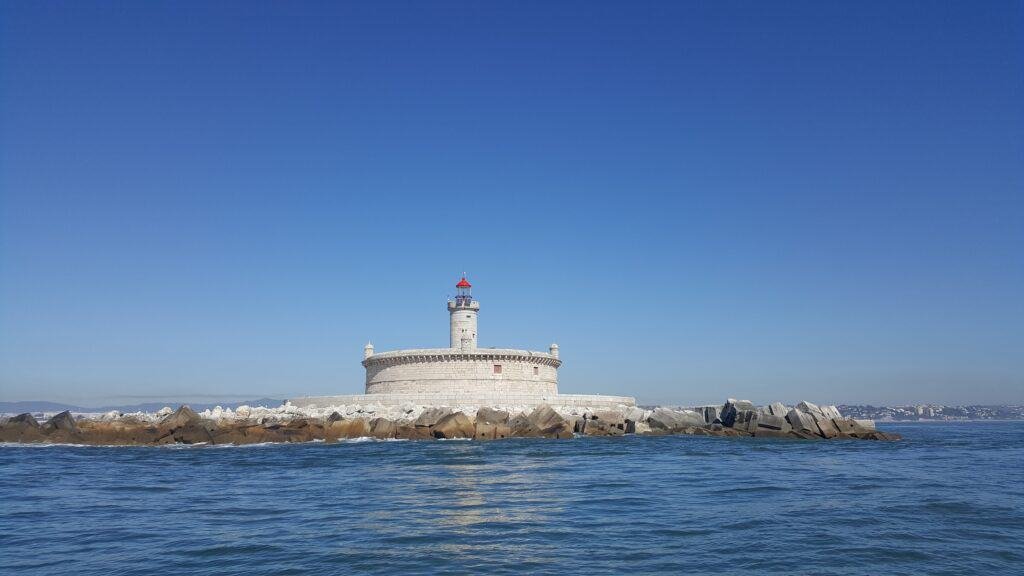
In 1593, the laying of the stones that would serve as the foundations was completed underwater. To prepare the blocks of stone used in the foundations and walls, a construction site was built on land near São Julião da Barra. From 1598 onwards, the Italian military engineer and architect Leonardo Torriania took over the management of the project. This was when the project entered a new phase, given the changes that Torriani made to it, expanding it.
Until it returned to Portuguese hands
In the Restoration of Independence on December 1, 1640, it was still under construction but already garrisoned and equipped with artillery. Assuming the throne as D. João IV (1640-1656), this sovereign determined that the works were concluded and that a Portuguese engineer took over the works (1643). Thus began a new constructive phase, under the supervision of the Count of Cantanhede, having been concluded in 1657.
O relatório de inspeção efetuada ao farol em 1751, mostra que este funcionava com azeite e que se encontrava em razoáveis condições. Esta estrutura, destruída pelo terramoto de 1755, foi reedificada como um dos seis faróis erguidos na costa portuguesa para auxílio à navegação, conforme determinação do Marquês de Pombal em 1758. O novo farol entrou em funcionamento em 1775.
In the 20th and 21st century

The Bugio Lighthouse has been restored several times over the centuries, including a complete restoration in the 1980s, when its lantern was replaced by a more modern version. Its maintenance is permanent, so much so that, even today, it is used as a lighthouse to support navigation.
